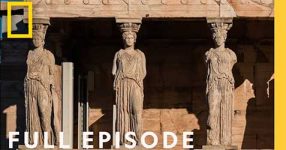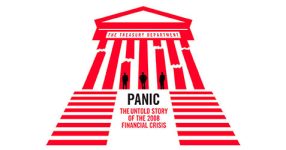The documentary “Impossible Peace: Dancing On A Volcano: 1929 – 1931” delves into the tumultuous period following the Great Depression, exploring its profound impact on global politics, economies, and societies.
The film opens with a reflection on the aftermath of two world wars, describing them as ruptures in the fabric of history. As the 1920s progress, there’s a sense of optimism, but beneath the surface, there are ominous signs of an impending crash and an elusive peace.
As Paris enters 1929, the atmosphere appears festive, particularly for the affluent. However, astute observers like the American writer Robert MC Alman perceive the underlying fragility of the era’s optimism. Amidst the glittering facade, there’s a sense of disconnection from reality, as articulated by Scott Fitzgerald’s commentary on the death of gods, wars fought, and shaken faith.
Unraveling of Stability and Leadership
The sudden death of Gustaf Stresemann, the Chancellor of Germany, in October 1929, destabilizes the nation’s future. Stresemann’s pragmatic leadership had provided a semblance of stability, but his passing leaves a precarious void. Germany’s economy, buoyed only on the surface, faces collapse following the Wall Street Crash, a scenario foreseen by Stresemann himself.
Soviet Russia, though insulated from the worst of the global depression, undergoes immense social upheaval under Stalin’s rule. The implementation of Stalin’s five-year plan triggers massive migration from rural areas to cities, fueling industrialization and the consolidation of power. Stalin’s 50th birthday marks the rise of an unparalleled cult of personality, reflecting the shifting dynamics of Soviet society.
Political Realignment and Diplomatic Maneuvers
Italy, under Mussolini’s regime, forges alliances with traditional centers of power, including the Vatican. The signing of the Lateran Accords solidifies the relationship between fascism and Catholicism, consolidating Mussolini’s grip on power. Meanwhile, India’s quest for independence gains momentum, with Gandhi’s leadership transforming it into a mass movement, challenging British colonial rule.
In Germany, the rise of Hitler and the Nazi Party is facilitated by political instability and economic turmoil. Hindenburg’s appointment of Hitler as Chancellor, driven by political maneuvering and panic, sets the stage for the Nazi ascendance. Meanwhile, the United States grapples with the ramifications of the Great Depression, with President Hoover’s response marked by uncertainty and ineffective policies.
Global Impact and Societal Turmoil
The Great Depression reverberates across Europe, exposing the fragility of existing political structures. Industrial production plummets, unemployment soars, and fear of revolution looms large. The rise of authoritarian regimes, revolving-door governments, and military takeovers underscores the continent’s vulnerability to economic shocks.
In Britain, the collapse of the pound’s exchange rate triggers a banking crisis, exacerbating unemployment and political instability. Japan’s modernization efforts, initially feted, falter amidst the global downturn, culminating in its aggressive expansion into Manchuria.
The documentary paints a vivid portrait of an era defined by uncertainty, upheaval, and societal transformation. Through a meticulous exploration of political, economic, and social dynamics, it highlights the interconnectedness of global events during the Great Depression and their enduring impact on the course of history. “Impossible Peace: Dancing On A Volcano: 1929 – 1931” offers valuable insights into a pivotal moment in the 20th century, underscoring the complexities of peace and prosperity in an ever-changing world.












